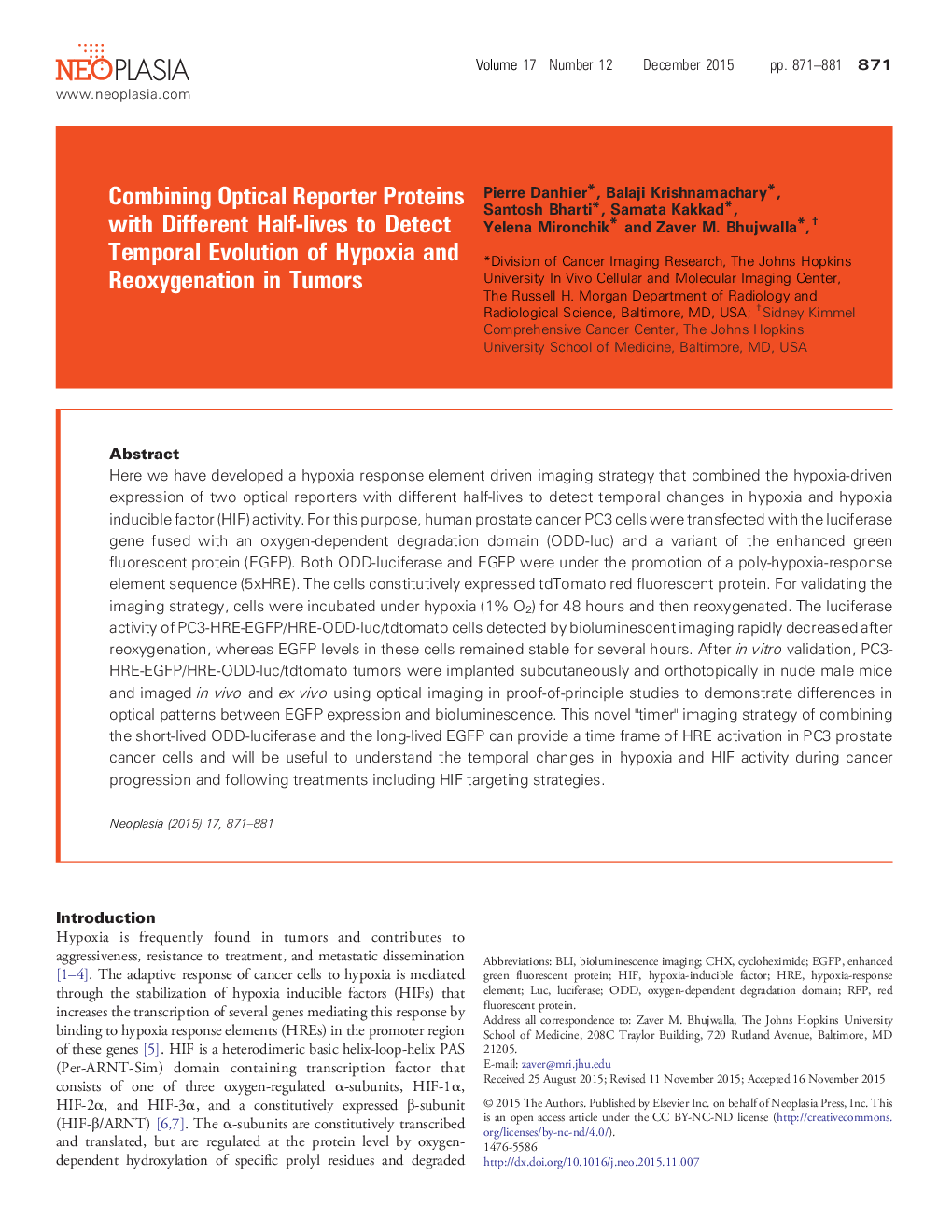| Article ID | Journal | Published Year | Pages | File Type |
|---|---|---|---|---|
| 2151082 | Neoplasia | 2015 | 11 Pages |
Here we have developed a hypoxia response element driven imaging strategy that combined the hypoxia-driven expression of two optical reporters with different half-lives to detect temporal changes in hypoxia and hypoxia inducible factor (HIF) activity. For this purpose, human prostate cancer PC3 cells were transfected with the luciferase gene fused with an oxygen-dependent degradation domain (ODD-luc) and a variant of the enhanced green fluorescent protein (EGFP). Both ODD-luciferase and EGFP were under the promotion of a poly-hypoxia-response element sequence (5xHRE). The cells constitutively expressed tdTomato red fluorescent protein. For validating the imaging strategy, cells were incubated under hypoxia (1% O2) for 48 hours and then reoxygenated. The luciferase activity of PC3-HRE-EGFP/HRE-ODD-luc/tdtomato cells detected by bioluminescent imaging rapidly decreased after reoxygenation, whereas EGFP levels in these cells remained stable for several hours. After in vitro validation, PC3-HRE-EGFP/HRE-ODD-luc/tdtomato tumors were implanted subcutaneously and orthotopically in nude male mice and imaged in vivo and ex vivo using optical imaging in proof-of-principle studies to demonstrate differences in optical patterns between EGFP expression and bioluminescence. This novel "timer" imaging strategy of combining the short-lived ODD-luciferase and the long-lived EGFP can provide a time frame of HRE activation in PC3 prostate cancer cells and will be useful to understand the temporal changes in hypoxia and HIF activity during cancer progression and following treatments including HIF targeting strategies.
